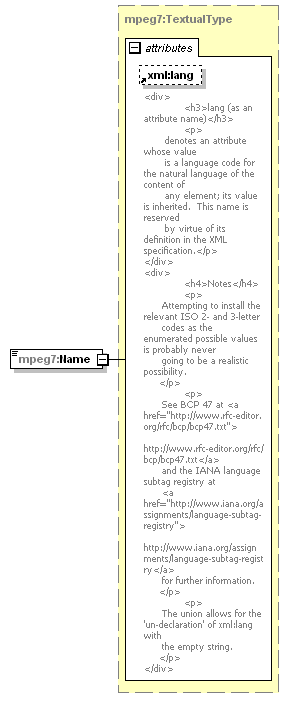<div>
<h3>lang (as an attribute name)</h3>
<p>
denotes an attribute whose value
is a language code for the natural language of the content of
any element; its value is inherited. This name is reserved
by virtue of its definition in the XML specification.</p>
</div>
<div>
<h4>Notes</h4>
<p>
Attempting to install the relevant ISO 2- and 3-letter
codes as the enumerated possible values is probably never
going to be a realistic possibility.
</p>
<p>
See BCP 47 at <a href="http://www.rfc-editor.org/rfc/bcp/bcp47.txt">
http://www.rfc-editor.org/rfc/bcp/bcp47.txt</a>
and the IANA language subtag registry at
<a href="http://www.iana.org/assignments/language-subtag-registry">
http://www.iana.org/assignments/language-subtag-registry</a>
for further information.
</p>
<p>
The union allows for the 'un-declaration' of xml:lang with
the empty string.
</p>
</div> |

